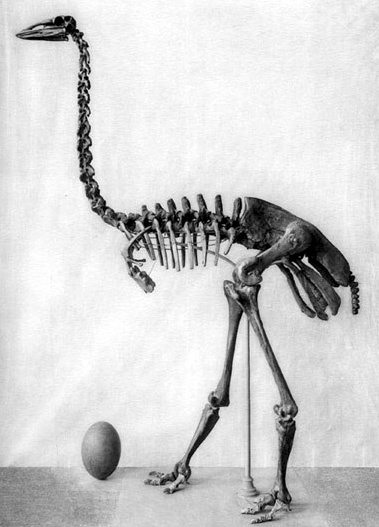Ripley Entertainment Inc.'s Blog, page 278
April 22, 2019
CARTOON 04-22-2019
April 21, 2019
CARTOON 04-21-2019
April 20, 2019
CARTOON 04-20-2019
April 19, 2019
Ritual Skeleton Burials Uncovered In Oxfordshire
Featured in Ripley's Believe It or Not!

[April 14-20th, 2019] Bizarre burials, water on the Moon, a 42,000-year-old horse, and the rest of the week’s weird new from Ripley’s Believe It or Not!
Ancient Skeletons In Britain
While performing construction for new water pipes in Oxfordshire, England, a mass burial site of Iron Age skeletons, contorted into strange poses, was uncovered. The 26 skeletons are believed to have undergone extensive burial rituals. Experts note that surrounding sites suggest human sacrifice was common in the area, but aren’t sure what to make of these bizarre burials.

Thames Water
Moon Water
According to research by the Goddard Space Flight Center at NASA, meteoroids have been releasing water from the surface of the Moon. After studying lunar rocks retrieved during the Apollo space missions, scientists had long thought that the Moon was completely devoid of water. However, new observations make them think that there is water—at least a little—once you dig more than three inches down.

Goddard Space Flight Center/NASA
42,00-Year-Old Horse Still Has Liquid Blood
A foal carcass from 42 millennia ago was recently uncovered in Yakutia, Russia. Hailing from the same region that soft mammoth tissue was recovered, researchers at North-Eastern Federal University were excited to learn all they could about this well-preserved specimen, but even they were surprised to find liquid blood and urine inside. Intact fluids are exceedingly rare, and the discovery is expected to provide unique insights into the fauna and microbes of 42,000 B.C.

Via North-Eastern Federal University
Marathon In Heels
Christelle Doyhambehere ran a marathon in just over six hours. While her speed might not merit her any headlines, the fact that she ran the whole race in heels does. With her partner challenging her to wear her high-class footwear in the race, she donned compression sleeves, running socks, plenty of ankle tape, and a pair of three-inch heels. This feat had been attempted before, but she beat that time by an hour and a half!

“7 Rings” Is One Of Michigan’s Favorite Things
Believe it or not, every time Ariana Grande’s iteration of “7 Rings” plays—in fact, every time any version of the song plays—the Michigan State pension gets a little larger. The song, hailing from “The Sound of Music,” is owned by Concord music, and the state’s pension just happens to now be the majority shareholder in the business. Fund managers state that music royalties are much less volatile than other investments and that they’re quite happy with the acquisition.
No, “420” Was Never An LAPD Code For Cannabis
Featured in Ripley's Believe It or Not!

Police use codes for internal communication, but, contrary to popular belief, the Los Angeles Police Department does not use the radio code “420” when referring to drug possession. It’s also not the city’s penal code for marijuana use.
Cannabis aficionados, and even those who abstain from smoking the green herb, often refer to 420 when someone uses marijuana, particularly if it’s 4:20 am/pm, or April 20 (4/20).
San Francisco has a 420 code, but it involves a juvenile disturbance, not drug possession. Section 420 of the California penal code references obstructing entry on public land, and in Las Vegas, Nevada, 420 refers to homicide.
The code may also cause some confusion because the number was used in a California bill that set up the state’s medical marijuana program. Senate Bill 420 took effect on Jan. 1, 2004, and regulates marijuana for medical purposes. In this case, the number of the bill was chosen because of its link to the pop culture term, not the other way around.
So how did 420 come to represent cannabis culture? There are a couple of theories. Back in the 1970s, a group of friends known as “The Waldos” from San Rafael High School in Marin County, California, would frequently hang out at 4:20 p.m. to get high. They timed it so they were finished with school for the day but their parents were still at work. Just like kids today use texting codes on their cell phones, these teens used the term 420 so their parents didn’t know what they were talking about. It’s believed the term spread to Deadheads—fans of the Grateful Dead, a band that got its start in the San Francisco Bay area.

A Golden State Park 420 celebration/CC the560k
Another theory is that 420 arose from the Bob Dylan song “Rainy Day Women #12 & #35,” which features the infamous lyric, “Everybody must get stoned.” If you multiply the two numbers, the result is 420. The songwriter has never admitted the song, which appeared on his 1966 album Blonde on Blonde, is the source of 420.
In case you’re wondering, here are some commonly used codes the LAPD uses:
148: Resisting Arrest
187: Homicide
207: Kidnapping
211: Armed Robbery
240: Assault
242: Battery
245: Assault With Deadly Weapon
311: Indecent Exposure
415: Disturbance
451: Arson
459: Burglary
480: Hit and Run
484: Theft
502: Driving Under the Influence (DUI)
By Noelle Talmon, contributor for Ripleys.com
CARTOON 04-19-2019
April 18, 2019
CARTOON 04-18-2019
April 17, 2019
The Carnivorous Cannibal Hares Of North America
Featured in Ripley's Believe It or Not!

Monty Python may have thought they were testing the limits of absurdity in their version of the hunt for the Holy Grail, but, believe it or not, rabbits can prove to be blood-thirsty beasts.
The movie’s producers, no doubt, chose to use a bunny as a carnivorous, deadly monster in the film because everyone knows that rabbits are gentle, grass-eating herbivores. This conception, however, may not be so true.

According to research published in Northwestern Naturalist, the snowshoe hare is a meat eater. Michael JL Peers, the lead on this study, observed several hares feeding on carrion carcasses in Yukon, Canada.
The snowshoe hare is probably best known for its fur changing color with the seasons. It’s brown during the summer, then turns snowy white for winter. The hare’s fur helps it avoid predators, but when those predators are dead, it might just be the hare eating them.
“Hares scavenged 12.4% of carcasses deployed.”
The study found that the snowshoe hares would not only eat from the carcasses of small birds, but also from lynxes and owls. In a bizarre twist, the hares also didn’t seem to have any problems chowing down on their own kind!

Provided by Michael JL Peers
While this turns the idea of rabbits being complete herbivores on its head, Peers notes that after sharing his findings, he’s heard from people all over the world who have observed this behavior from both wild and domesticated rabbits. Occurrences of supposed herbivores gnawing on some extra protein are shaking up how much of the scientific community split animals into sweeping dietary groups.
Indeed, other scientists have recorded arctic ground squirrels eating lemming brains, deer devouring birds, and domestic rabbits eating disemboweled rats meant to be food for raptors.

Via European Journal of Wildlife Research
Peers suggests that the rabbits are likely scavenging for protein during the harsh winter months. Many biologists have long believed that herbivores, like rabbits, wouldn’t have the digestive tracts to process meat, but these acts seem consistent enough to prove otherwise. Because they don’t have the teeth to effectively rip off pieces of flesh, they must rely on gnawing bits off of the carcasses. The hares don’t seem to hunt their own prey (so far) but will become territorial.
“It appeared that individuals defended the carcass from other hares.”
CARTOON 04-17-2019
April 16, 2019
The Largest Egg, From The Largest Bird
Featured in Ripley's Believe It or Not!

Bigger than kiwis, cassowaries, emus, and ostriches, the elephant bird towered nearly ten feet tall. The Vorombe titan was confirmed in 2018 to be the largest bird known to science, and though these avian behemoths have long been extinct, they’ve left behind some truly remarkable rarities.

There are nearly a dozen elephant bird eggs in the Ripley collection. Each one measures about a foot in length and is big enough to hold two-and-a-half gallons—the equivalent of about 160 chicken eggs! Despite being pre-fossilized relics, these specimens are believed to be from about the 10th century—just before scientists think the elephant bird went extinct.
Accounts of elephant birds existed in the folklore of travelers for much longer than researchers think the birds were actually alive. While under French occupation, Madagascar natives spoke of a large bird haunting the remote reaches of the island and laying its eggs in places forbidden for hunters to reach. Even Marco Polo heard tales of giant birds from other travelers.

Elephant birds once roamed the uninhabited island of Madagascar. It is believed that the arrival of humans led to their demise. Though there’s little evidence humans hunted the giant birds, their eggs were highly prized. A few families could dine on a single egg for a few nights, and the shells themselves were prized as bowls and rum containers.

When explorers breached the island’s forests in the 19th century, researchers became totally enamored with these gargantuan eggs. They have popped up in museum collections all over the world, and a few were even found unbroken. Scientists at the National Geographic Society even managed to radiograph one, only to discover it had been fertilized, with a young elephant bird skeleton sealed within.
These sturdy eggs also managed to leave the island on their own. Two eggs were found in Australia, and are believed to have drifted there on the ocean, surviving a 4,000-mile journey!
Ripley Entertainment Inc.'s Blog
- Ripley Entertainment Inc.'s profile
- 52 followers









